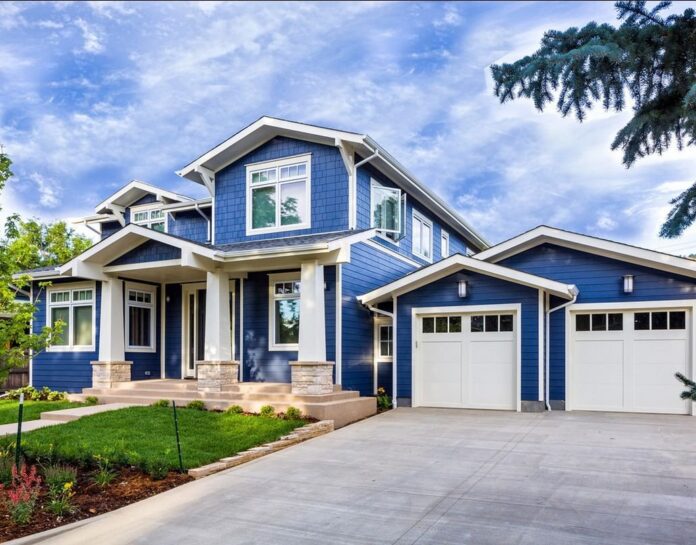Are you planning to give your home a fresh look with new paint? Estimating the right amount of paint is crucial. It saves time and money. This post will guide you through calculating how much paint you need for your home’s exterior. First, understand why accurate measurements matter. They ensure you buy enough paint, not too little or too much. It makes your painting project smoother and more cost-effective. If you’re considering residential exterior house painting in oshawa on, knowing how to estimate paint can make your project successful and enjoyable.
1. Accurate Measurements For Residential Exterior House Painting:
First, measure the height and width of each exterior wall. Multiply these numbers to find the area in square feet. Add all the wall areas together. Remember, accurate measurements are key. Measure each wall twice to be sure. In addition, consider any architectural features like eaves or moldings that might affect the paint you need. Being thorough in your measurements ensures that you won’t underestimate the paint required, helping avoid multiple store trips.
2. Account For Windows And Doors:
Next, subtract the area of windows and doors. Measure their height and width. Multiply to get their areas. Subtract this from your total wall area. This step helps you avoid buying too much paint, which can save money. For accurate results in your project, consider consulting exterior house painting services in Oshawa ON. They can provide expert advice on the amount of paint needed for different materials and textures of exterior walls.
3. Consider Multiple Coats:
Usually, you will need more than one coat of paint. Decide how many coats your home needs. Multiply the total area by the number of coats. More coats mean more durability but also more paint. Furthermore, consider the current color of your walls and the color you want to apply. Darker colors might require more coats to cover properly, especially if you paint with a lighter shade. Planning for multiple coats will help achieve a vibrant, even color across your home’s exterior.
4. Check The Paint Coverage:
Look at the paint can label. It tells you how much area one gallon covers. It is usually around 350 square feet per gallon. Always check the label as different brands might cover more or less area. Additionally, the label might provide information on drying times and the best conditions for painting. Following these guidelines helps ensure that the paint adheres well and lasts longer, giving you better value and a more professional finish.
5. Calculate The Total Paint Needed:
Divide the total area by the coverage of the paint. It gives you the total gallons needed. Always round up to account for extra paint needed for touch-ups. It’s better to have a little extra than to run short. In cases where precision is key, hiring exterior house painters near Oshawa ON can ensure that your calculations are accurate and your painting project is executed flawlessly.
6. Factor In The Texture:
If your walls are textured, they might need more paint. Rough surfaces use more paint than smooth surfaces. Consider buying a bit extra if your walls are rough. Also, it ensures full coverage and a uniform finish. Furthermore, textured walls can hide imperfections only if they are well-coated. Pay special attention to deep textures, as they can be tricky to paint over. Rollers designed for rough surfaces can also improve coverage and reduce the paint needed.
7. Consider The Paint Type:
Different types of paint cover areas differently. For example, latex paint might cover more areas than oil-based paint. Choose the type of paint first before calculating. Also, it ensures you get the most accurate estimation. Moreover, think about the finish you desire. Some finishes, like matte or gloss, might require different amounts of paint or additional coats to achieve your desired look. So, understanding these details will help you make the best choices for your home’s appearance and durability.
8. Don’t Forget The Primer:
If you’re painting over a darker color, use a primer. It ensures that the new color looks bright and even. Calculate the primer needed, just like the paint. Primers help the topcoat stick better and last longer. If you need professional help, consider hiring services for exterior home painting Oshawa ON. So, they can guide you on the best type of primer to use for your home’s exterior, ensuring a beautiful and durable finish.
9. Prepare For Extra:
It’s wise to buy about 10% more paint than calculated. It covers any mistakes or additional coats needed. Having a little extra paint also helps with future touch-ups. Moreover, this extra paint can be very useful if you miss a spot or if some wall sections absorb more than expected. Also, keeping extra paint means you can easily handle unforeseen issues without rushing to the store. So this makes the painting process more relaxed and efficient.
10. Use A Paint Calculator:
Many websites offer free paint calculators. They can help you estimate the amount quickly. You need to enter your measurements and the number of coats. Using these tools can simplify your planning process. Additionally, these calculators often provide tips on how to measure your house correctly. Also, they can guide you through complex areas like corners and irregular shapes, making sure your calculations are as accurate as possible. So this way, you’re more likely to buy the right amount of paint, ensuring a successful project from start to finish.
Conclusion:
Estimating the right amount of paint is not too hard. Follow these steps carefully. They will help you save money and avoid running out of paint mid-project. Also, always double-check your calculations and be prepared with extra paint for any situation. Happy painting! So, with the right preparation, your painting project will go smoothly, and your home will look wonderful. This advice is especially crucial for projects like residential exterior house painting in oshawa on, where weather conditions affect how paint adheres and lasts.

